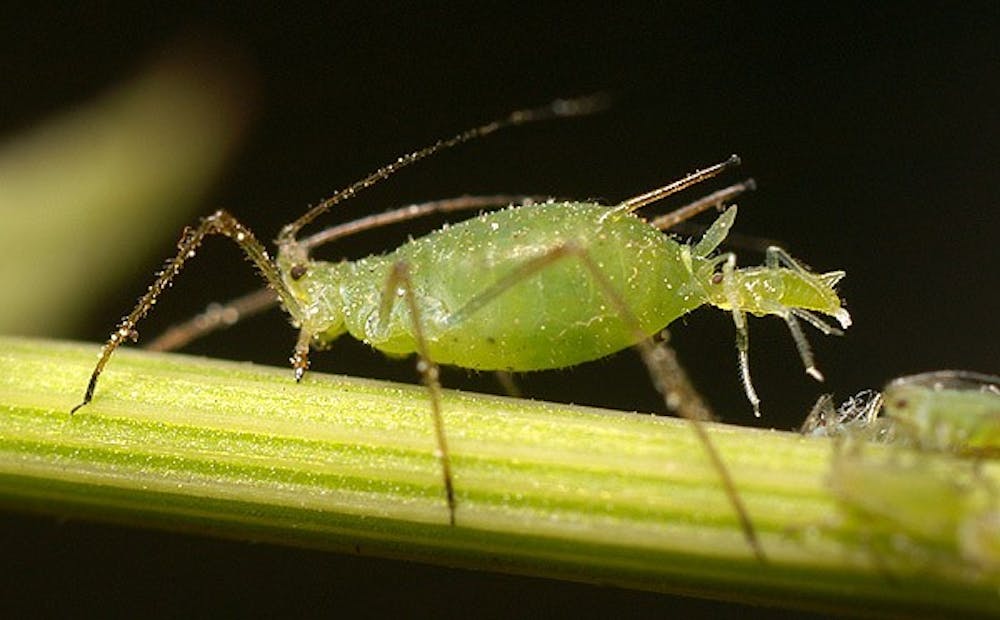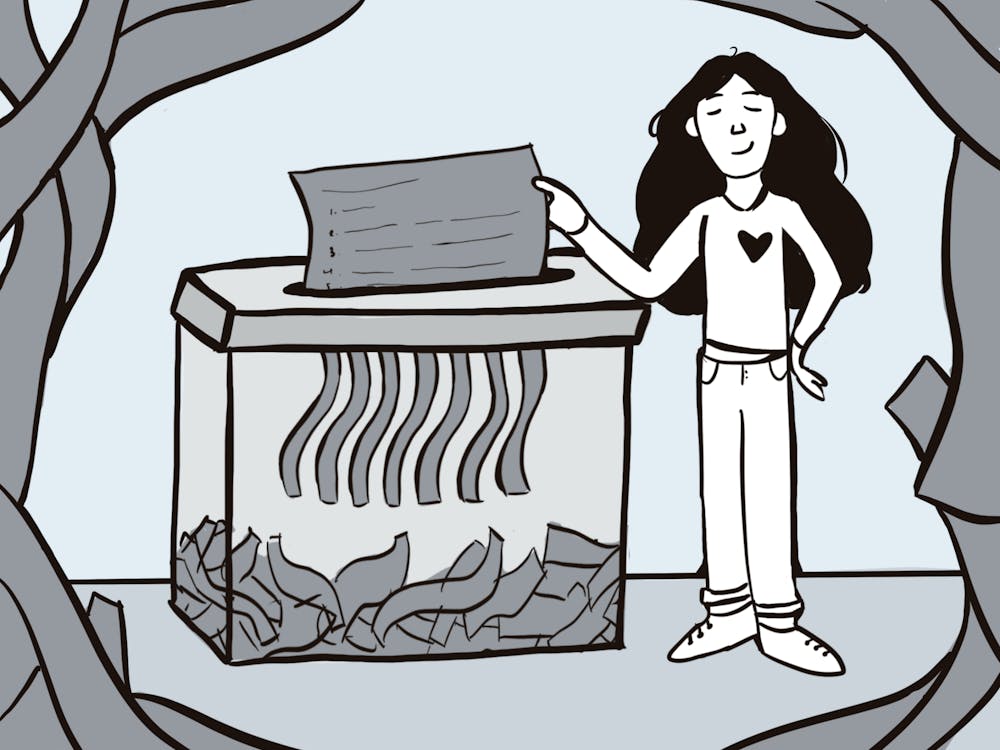Belonging to the superfamily of Aphidoidea, Aphids are small, usually green insects sometimes referred to as “plant lice,” which turns out to be an accurate moniker.
Imagine waking up one day and coming to greet your beloved plants, only to find that hidden on the underside of their leaves is a carpet of the tiny menaces. Imagine the devastation and the disgust as this living skin refuses to remove itself in spite of the not so gentle prodding of the pen you borrowed from your roommate.
They don’t stick to one plant either. Instead, they travel throughout the apartment, from windowsill to windowsill, from room to room till all of the plants have fallen victim to them. Though it’s not as much of a concern in my apartment, aphids can actually travel long distances by riding the winds.
That’s right, aphids have taken my irrational fear of being sucked up into a tornado and turned it into their means of world domination.
That’s not their only means of migration, however. Should the need become great, aphids can spontaneously produce winged offspring which are able to leave home and travel the world’s plants.
You know what else makes aphids terrifying? They can reproduce asexually. So when you go to bed at night, safe in the knowledge that those darned aphids can’t possibly recover from that morning’s genocide, the one little bugger who made it through the massacre will be popping out little clones of herself.
Even more frightening, some species of aphids can produce thousands of descendants from a single female over the course of her 20-40 day lifespan.
In fact, their entire reproductive process sounds like a logistical mess. Some species will produce only females for a reproductive season. In the spring, the newly born, dudeless hatchlings are called fundatrices. So how do they reproduce? Well, I mentioned that aphids can reproduce asexually. Specifically, their miracle of life happens through the development of an embryo from an unfertilized egg, called parthenogenesis.
However, the aphid weirdness doesn’t end there. The cloned offspring of these ladies typically go on to give live birth instead of laying eggs. This process is called viviparity (really just a fancy way of saying popping a fully formed being out of the womb), and the offspring are called virginoparae. This process repeats itself, over and over again, till your plants are just dripping with the little ladies.
However, it’s not as though male aphids don’t exist. Oh no, what I’ve described only covers the spring and summer parts of the aphid reproduction cycle. Once autumn rolls around (nobody’s entirely sure what signals to aphids that it’s time to start doing this) the aphids start parthenogenetically producing male offspring in addition to the female.
These men are identical to their mothers, with the exception of having one less chromosome. They often lack wings and sometimes even mouthparts, because their existence is entirely for the purposes of reproduction. The male and female aphids, you know, do their thing, and then the resulting eggs are laid to gestate for the rest of winter. In the spring, the eggs will hatch into a population that is entirely composed of women, and the cycle begins anew.
So why are aphids so bad? Why not try and live harmoniously with my plant’s tiny tenants? Well, using a mouth piece called a stylet, aphids feed on the sap of plants. Moreover, aphid saliva is actually toxic to plants. So that little army is essentially salting the earth that they’re feeding on, causing the plant to wilt, brown and eventually die.
Most aphids also secrete a sticky fluid known as honeydew, which can promote the growth of fungus and prevent the effectiveness of fungicides. Interestingly, though, ants enjoy eating this secretion, as it is high in sucrose and will actually protect herds of aphids on the plants that they eat. They will even “milk” the aphids by stroking them with their antennae, promoting the production of honeydew.
Unfortunately for me, the prospect of farming my aphid infestation is not that appealing. I’d much rather have the harvest from my plants than their parasites. So what can I do about it?
Of course, there are chemical options. As one of the most destructive pests in temperate regions, there are many, many insecticides targeted towards the death and destruction of aphids. But if you’d prefer to more closely follow the Geneva Conference’s code of conduct for modern warfare, then there are still options out there for you.
If the infestation is small, then I would suggest simply removing the affected leaves or flowers. You have to be careful that you don’t leave any behind when you do so, whether on the plant or in the soil around it.
Otherwise, you can also wash your plants down with water to remove the intruders. And if this doesn’t work, spray your plants down with soapy water, making it more difficult for the aphids to take up residence and stick to the leaves.
No matter what path you take, however, the most important thing is vigilance. In the fight against the aphid, patience is everything.
























Please note All comments are eligible for publication in The News-Letter.